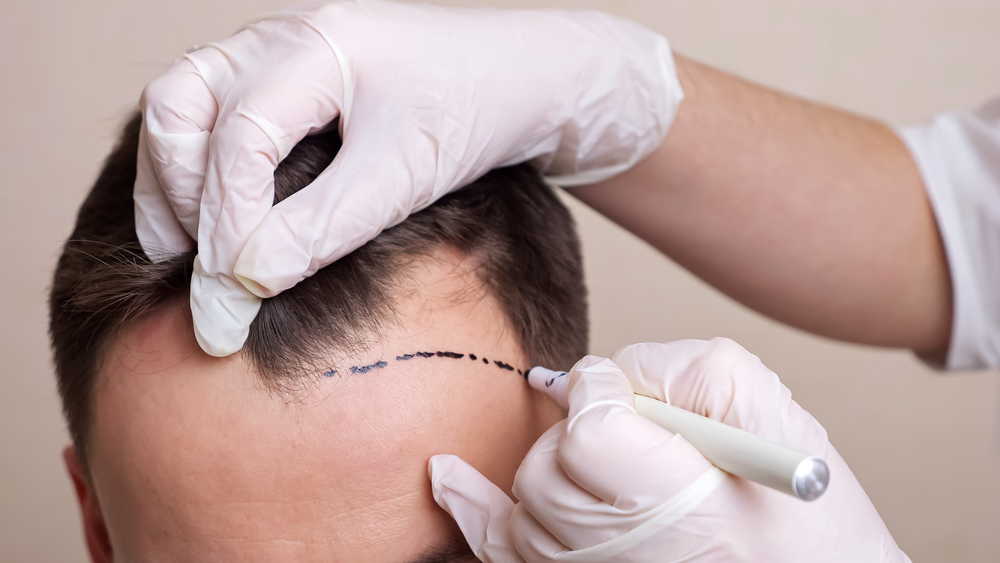Why Take Finasteride Before and After a Hair Transplant?

Content by

Last Updated
Start a Consultation Today
See our range of Men's Hair Loss Treatments
Finasteride 1mg Tablets delivered discreetly from our UK Pharmacy.
Male pattern baldness is a hair loss condition affecting men across the world. While there are numerous treatment options available, many men turn to hair transplant surgery to combat the condition and restore a full head of hair. To maintain the results after a hair transplant, patients are often prescribed to take a specific medication called Finasteride.
In this blog article, we give a clear understanding of Finasteride and hair transplant surgery and explain how Finasteride can be taken before and after a hair transplant to boost its overall success and longevity.
Table of Contents
- Understanding Finasteride and Hair Transplants
- Does Finasteride Have Side Effects?
- Do You Need to Take Finasteride before a Hair Transplant?
- Should You Continue Taking Finasteride After a Hair Transplant?
- Can Transplanted Hair Fall Out Without Finasteride?
Understanding Finasteride and Hair Transplants
Finasteride is a prescription medication used to treat male androgenetic alopecia (male pattern baldness) and is classified as a 5-alpha reductase inhibitor. This medication works by inhibiting an enzyme called 5-alpha reductase, which is responsible for changing testosterone into dihydrotestosterone (DHT). DHT is a hormone that can contribute to the cause of male pattern baldness. By lowering the DHT levels, Finasteride helps to prevent further hair loss and improve hair regrowth. It can take 3 to 6 months for users to see visible results. The usual dosage for treating male pattern baldness is Finasteride 1mg.
A hair transplant is a surgical procedure where hair follicles are moved to an area that is thin or bald, typically the temples or the crown of the head. There are two types of hair transplants: FUT (Follicular Unit Transplantation) and FUE (Follicular Unit Extraction). [1] Once the hair follicles are transplanted, the hair continues to grow in its new location, providing a permanent solution for male pattern baldness.
Does Finasteride Have Side Effects?
As Finasteride works by impacting the levels of the DHT hormone, it may cause potential side effects. Like all medications, not everyone will experience side effects. [2]
Common side effects (affects 1 in 100 people):
- Low sex drive
- Erectile dysfunction
- Decrease in ejaculate volume
Serious side effects (affects 1 in 1,000 people):
- Breast tenderness, pain, lumps or swelling
- Nipple discharge
- Low mood or depression
In rare cases, some patients may have an allergic reaction to Finasteride. Symptoms of an allergic reaction include paleness, swelling, difficulty breathing or swallowing and dizziness. In these cases, stop the medication and seek medical attention. To see the full details on the side effects and warnings of Finasteride, please refer to the product information leaflet.
Do You Need to Take Finasteride before a Hair Transplant?
You may be advised to start taking Finasteride by your hair transplant clinic or surgeon before you undergo the procedure. The reason for this is to prevent further hair loss or thinning and create a better environment for the newly transplanted hair to grow, leading to potentially more effective results.
However, not every hair transplant patient will be advised to take Finasteride before the procedure. It can depend on several factors including the length of time before the surgery, the current hair loss pattern, the type of hair transplant (either FUT or FUE) and medical history. In addition, it allows hair transplant surgeons to have a better look at the strongest natural hair follicles without the impact of Finasteride. These hair follicles are often chosen to be relocated during the hair transplant. [3]
Should You Continue Taking Finasteride After a Hair Transplant?
It is not an essential step to take Finasteride after a hair transplant. Many hair transplant clinics or surgeons prescribe Finasteride afterwards to patients who suffer from male pattern baldness to improve the overall success and longevity of the procedure. As the transplanted hair grows in its new location, Finasteride will maintain DHT levels and enhance the growth process. Additionally, it is normal for hair transplant patients to experience temporary hair loss or shedding for a few weeks and Finasteride can aid recovery and maintain the transplanted hair follicles.
Research has shown the effectiveness of taking Finasteride after a hair transplant. In a study amongst 79 men with androgenetic alopecia between 20 and 45 years old, 40 men were assigned to take Finasteride 1 mg and 39 men were assigned to take a placebo once daily from 4 weeks before until 48 weeks after a hair transplant. After 48 weeks, the study found significant improvement in the scalp hair surrounding the hair transplant and increased hair density. [4]
Can Transplanted Hair Fall Out Without Finasteride?
Hair transplants still show effective results without taking Finasteride. In fact, hair transplants alone have a success rate of 97% and above. [5]
However, transplanted hair can fall out without Finasteride for many reasons including poor post-operative care or genetics. Finasteride may prevent the transplanted hair from falling out only if caused by high DHT levels. Patients who suffer from male androgenetic alopecia will need to take Finasteride after a hair transplant for as long as they want to maintain the boosting effect.
Sources
- NHS. (2023). Hair Transplant. Retrieved on 21st August 2024, from: https://www.nhs.uk/conditions/cosmetic-procedures/cosmetic-surgery/hair-transplant/
- NHS (2023). Side effects of Finasteride. Retrieved on 21st August 2024, from: https://www.nhs.uk/medicines/finasteride/side-effects-of-finasteride/
- Sharma Skin & Hair Surgery. (2023). Retrieved on 21st August 2024, from: https://www.thesharmaclinic.com/knowledge/hair-transplant/when-should-you-start-finasteride/
- National Library of Medicine. (2005). Retrieved on 21st August 2024, from: https://pubmed.ncbi.nlm.nih.gov/16188178/
- Wimpole Clinic. (2024). Hair Transplant Statistics. Retrieved on 21st August 2024, from: https://wimpoleclinic.com/blog/hair-transplant-statistics-2022/#Key_facts_and_statistics_about_hair_transplants
Whilst all of our content is written and reviewed by healthcare professionals, it is not intended to be substituted for or used as medical advice. If you have any questions or concerns about your health, please speak to your doctor.

